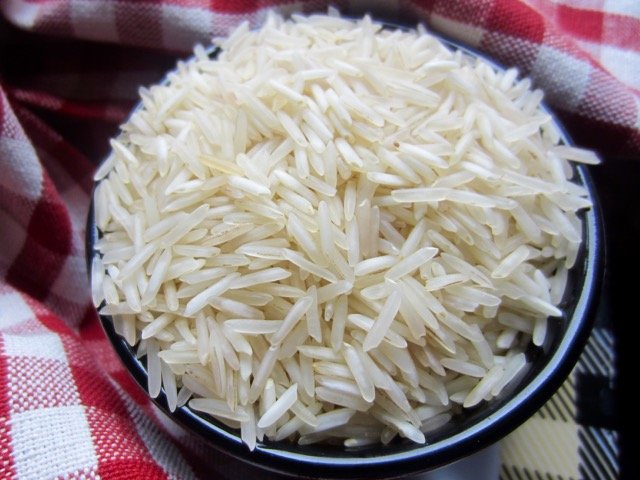
Basmatic rice, often causing confusion among consumers, is simply a misspelling of basmati rice, a fragrant long-grain variety cherished for its delicate aroma and fluffy texture. Cultivated in the foothills of the Himalayas, basmati rice is not only a culinary delight but also a symbol of tradition and cultural heritage. Its elegant slender grains, when cooked to perfection, evoke a harmonious balance of flavor and fragrance that truly elevates any dish. Let’s unravel the wonders of this cherished basmatic rice and explore its timeless appeal in the world of gastronomy.
All About Basmati Rice: The Fragrant and Fluffy Grain We Love
Welcome, young food enthusiasts! Today, we are going on a delicious journey to explore one of the most popular types of rice in the world – basmati rice. Have you ever wondered what makes basmati rice so special? Let’s dive into the wonderful world of basmati and uncover its secrets together!
What is Basmati Rice?
Basmati rice is a long-grain rice variety that is well-known for its exquisite aroma and unique taste. The word “basmati” comes from the Sanskrit word meaning “fragrant,” and true to its name, basmati rice has a delightful scent that can transport you to faraway lands with just one whiff. This type of rice is primarily grown in the Indian subcontinent, particularly in India and Pakistan, where the climate and soil conditions are perfect for cultivating this flavorful grain.
The Characteristics of Basmati Rice
Basmati rice stands out from other types of rice due to its distinct characteristics. One of the key features of basmati rice is its long, slender grains that elongate further when cooked. These grains remain separate and fluffy, making basmati rice a favorite choice for dishes where you want each grain to be distinct and flavorful. Moreover, basmati rice has a nutty aroma and a delicate flavor that pairs well with a wide range of ingredients, making it a versatile option for various cuisines.
The Aromatic Essence of Basmati
One of the most enchanting aspects of basmati rice is its captivating aroma. When you cook basmati rice, the kitchen fills with a warm, fragrant scent that can make your mouth water in anticipation. This delightful aroma comes from the natural compounds present in the rice grains, which are released during the cooking process. The unique fragrance of basmati rice adds an extra layer of sensory pleasure to any dish it is used in.
Health Benefits of Basmati Rice
Not only is basmati rice delicious, but it also offers several health benefits. Basmati rice has a lower glycemic index compared to many other types of rice, which means it is digested more slowly, leading to a gradual release of energy. This makes basmati rice a good choice for maintaining stable blood sugar levels and providing sustained energy throughout the day. Additionally, basmati rice is naturally gluten-free, making it suitable for individuals with gluten sensitivities or celiac disease.
The Nutritional Value of Basmati Rice
Basmati rice is not only a flavorful grain but also a nutritious one. It is a rich source of carbohydrates, which are essential for providing energy to our bodies. Basmati rice also contains small amounts of protein and fiber, although it is not as high in protein and fiber as some other whole grains. Nevertheless, when paired with a variety of vegetables, proteins, and healthy fats, basmati rice can be part of a well-balanced and wholesome diet.
Cooking with Basmati Rice
Now that you know all about the wonderful qualities of basmati rice, let’s talk about how to cook with this aromatic grain. Cooking basmati rice is easy, and with a few simple tips, you can make perfect, fluffy rice every time. Here’s a step-by-step guide to cooking basmati rice:
Step 1: Washing the Rice
Before cooking basmati rice, it’s essential to wash it thoroughly to remove any excess starch. Place the rice in a bowl and rinse it with cold water, gently rubbing the grains between your fingers. Repeat this process several times until the water runs clear.
Step 2: Soaking the Rice
Soaking basmati rice before cooking can help the grains cook more evenly and become fluffier. After washing the rice, soak it in water for about 30 minutes to 1 hour. This step is optional but recommended for the best results.
Step 3: Cooking the Rice
For cooking basmati rice, the ratio of rice to water is typically 1:1.5. This means for one cup of rice, you’ll need one and a half cups of water. Bring the water to a boil, add the rice, and reduce the heat to low. Cover the pot and let the rice simmer for about 15-20 minutes, or until all the water is absorbed and the rice is tender. Fluff the rice with a fork before serving.
Delicious Basmati Rice Recipes
Basmati rice can be used in a variety of dishes, from traditional Indian biryanis to simple pilafs and stir-fries. Here are a few mouthwatering basmati rice recipes for you to try at home:
1. Vegetable Biryani
Vegetable biryani is a fragrant and flavorful rice dish that combines basmati rice with an assortment of colorful vegetables and aromatic spices. This vegetarian delight is a perfect choice for a hearty and satisfying meal that showcases the beauty of basmati rice.
2. Lemon-Cilantro Basmati Rice
For a refreshing and zesty twist on plain basmati rice, try making lemon-cilantro rice. This recipe combines the bright flavors of lemon and fresh cilantro with fluffy basmati rice to create a side dish that pairs perfectly with grilled meats or roasted vegetables.
3. Coconut Milk Rice Pudding
Indulge your sweet tooth with a comforting bowl of coconut milk rice pudding made with basmati rice. This creamy and luscious dessert is infused with fragrant coconut milk and warm spices, making it a delightful treat for any occasion.
Basmati rice is truly a treasure in the world of grains, offering a delightful combination of fragrance, flavor, and versatility. Whether you enjoy it in savory dishes like biryanis and pilafs or in sweet treats like rice pudding, basmati rice never fails to impress with its unique qualities. So, next time you’re in the mood for a delicious and aromatic meal, reach for a bag of basmati rice and let its magic elevate your culinary creations!
I hope you’ve enjoyed learning all about basmati rice today. Remember, food is not just about eating; it’s also about exploring new flavors, textures, and cultures through what we cook and eat. Until next time, happy cooking and bon appétit!
How to Cook Perfect Basmati Rice
Frequently Asked Questions
What is basmati rice known for and how is it different from other types of rice?
Basmati rice is a long-grain rice famous for its aroma, delicate flavor, and fluffy texture when cooked. It originates from the Indian subcontinent and has a unique nutty taste. Compared to other types of rice, basmati is known for its elongated grains that remain separate and do not stick together after cooking.
How should basmati rice be cooked to achieve the best results?
To cook basmati rice, rinse the rice thoroughly in water to remove excess starch before cooking. For perfect results, use a rice-to-water ratio of 1:1.5 and bring the water to a boil before adding the rice. Once added, reduce the heat, cover, and let it simmer until the water is absorbed and the rice is tender. Let it rest for a few minutes before fluffing with a fork.
Can basmati rice be a healthy choice as part of a balanced diet?
Yes, basmati rice can be a healthy choice when consumed as part of a balanced diet. It is a good source of carbohydrates and provides essential nutrients like fiber, vitamins, and minerals. Opting for whole grain basmati rice over refined varieties can further enhance its nutritional value.
Final Thoughts
Basmati rice, known for its delicate aroma and long slender grains, stands out as a popular choice among rice varieties. Its distinct fragrance and fluffy texture make it a versatile ingredient suitable for various dishes. Whether used in pilaf, biryani, or simple steamed rice, basmati elevates the overall flavor profile. When cooked properly, basmati rice enhances the dining experience with its light and airy quality. In conclusion, basmati rice is a premium rice option that adds a touch of sophistication to any meal.



